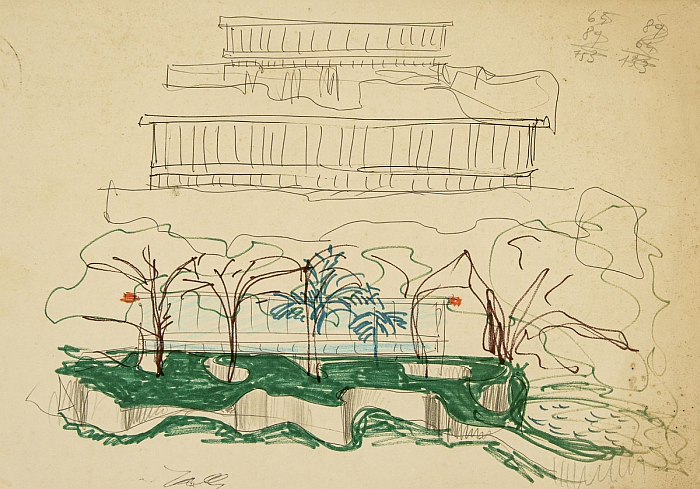June sees the start, in the northern hemisphere, of both meteorological summer and astronomical summer
Yet for all that the arrival of summer invariably means an increasing living of life out-of-doors, and an increasing reluctance to concern oneself with overly cerebral activities, there are after all beaches to be lain on, alpine passes to be explored, and phenomenally lightweight pop novels to be read, it is important to not only take regular breaks from the sun, but also to ensure that you keep your mental faculties as fit and active as your physical ones: you'll need them come autumn.
And an architecture and or design museum offers the perfect location for both.
Our recommended meaningful shady retreats in summer 2024 can be found in Ulm, Copenhagen, Karlsruhe, Bloomfield Hills and Berlin......
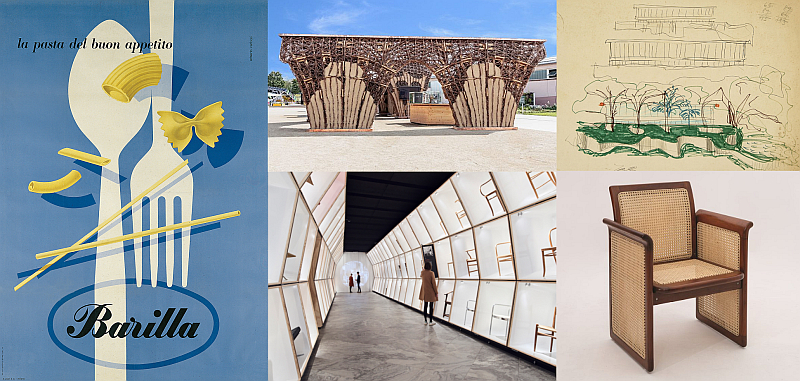
There is an argument to be made that an important aspect in defining 'design' is located in reflections on the movement in the course of the 20th century from craft, artisanal, processes in the production and supply of objects of daily use to an industrial, mass-market production and supply: the designer being a key facilitator in that (interdisciplinary) process. Something that can be understood in context of, for example, textiles, tableware, lighting, furniture. Or pasta.
And now you think we're being silly, don't you. Even sillier than normal. Pasta as a design genre!!
Think what you will for we are confident that al dente: Pasta & Design will demonstrate otherwise. Will demonstrate that it is you who are being silly.
Will help elucidate the role of packaging and advertising design, packaging and advertising designers, in contributing to the post-War rise in pasta's popularity in Europe, in establishing the international popularity of pasta, and thereby help underscore the role of not only advertising in the development of contemporary society, but also of pasta, and pizza, in stabilising the post-War peace in Europe. And will also help elucidate the role of industrial and product design, of industrial and product designers, and of architects, in developing novel pasta forms: whereas the long established pasta forms, invariably, arose form local tradition, local possibilities, local technologies, and local Ragù, pestos etc, the industrialisation, rationalisation, commercialisation et al of the 20th century increasingly saw novel pasta forms developed by professional designers from contemporary perspectives and from contemporary motives. One of the first commissions for a novel industrial pasta form being, by all accounts, one undertaken at the HfG Ulm in the early 1960s for the West German manufacturer Birkel by Walter Zeischegg, a trained sculptor who was so influential in the development of synthetic plastics as a material at the HfG Ulm, and thereby a very informative link between the formal possibilities of synthetic plastics and the formal possibilities of pasta. And just one of several links to the HfG Ulm, that so influential if short-lived West German design institution, al dente: Pasta & Design promises to make.
Alongside making and elucidating links to pasta and art and to pasta and wider product design in context of how pasta is made, transported, stored, cooked and eaten. The latter promising a few differentiated insights on the fork, that youngest of cutlery concepts.
And thus a presentation that should help focus attention on the wider relationships between pasta and design, on the intersections between pasta and design, on the place, role and function of pasta in European society and the development of that European society. On pasta as a design genre: that thing no-one every considers, being as we all are far too busy consuming pasta to reflect on pasta. Another parallel between pasta and other design genres: unreflective consumption and objectification blinding us to the wider contexts and relationships.
In addition al dente: Pasta & Design is recommendable because of the bravery of a museum in a region where spätzle is considered sacred to remind us all of the relevance and importance of another 'noodle' typology; an understanding of the primacy of spätzle very much embraced by Otl Aicher, that defining character at the HfG Ulm, but which didn't stop him also working on the development of a pasta maker for Braun.
al dente: Pasta & Design is scheduled to open at the HfG-Archiv, Am Hochsträß 8, 89081 Ulm on Friday June 7th and run until Sunday January 19th. Further details can be found at https://hfg-archiv.museumulm.de
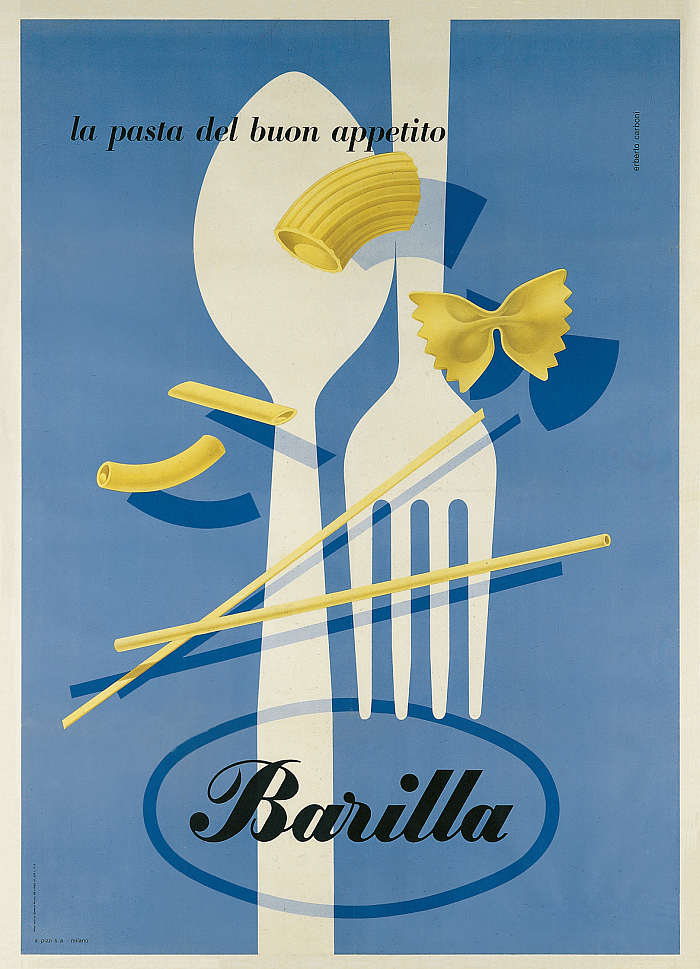
In these dispatches we rarely make note of newly organised permanent collection presentations in design museums concentrating as we tend to on temporary exhibitions. Which while, we hope, understandable, is, we 'd argue, wrong, because newly organised permanent collection presentations are, or at least can be, interesting and important: the changes of perspectives enforced by a reorganisation not only allowing fresh readings of the collection, fresh appreciations of the associations within the collection but also, and arguably most importantly, preventing the (hi)story elucidated through a museum collection exhibition from becoming staid and stale. Becoming definitive rather than the approximation it always is.
Something that Danish Modern at Designmuseum Danmark should elucidate being as it is, or we certainly hope, certainly claims to be in the description, not only a reorganisation of part of the permanent exhibition but a reorganisation of the narrative of 20th century design in and from Denmark as discussed by Designmuseum Danmark.
With a focus on the period from the 1920s to the 1970s, those fascinating decades in context of design in and from Denmark when designers in Denmark wrestled with, for example, the rise of Functionalism and International Modernism, or with the rise of a global post-War furniture market, or with the rise of a questioning of Functionalism and International Modernism, and all within the context of responding to local needs, possibilities and economics, Danish Modern promises through its mix of design genres and creatives both Danish and international, for a much wider-ranging discussion on the (hi)story of design in and from Denmark than that normally articulated.
A promised reorganisation of the narrative of 20th century design in and from Denmark where, yes, it will be very interesting to see how the curators deal with a Jørgen Roos’ "time-honoured tradition and quality craftsmanship" tourist gaze view of design in Denmark, that central pillar of the marketeers' narrative of design in and from Denmark since the 1950s; or how they place a Kaare Klint in the (hi)story of design in and from Denmark; or how they place the Panton Chair in context of the (hi)story of design and from Denmark, how openly they discuss the (hi)story of the Panton Chair, and Verner Panton, in context of the (hi)story of design in Denmark; or in how far they allow for the word 'radical' to be employed in context of Verner Panton and Nanna Ditzel, if they allow for a breaking of the current incongruity within, current impossibility of, the term 'Danish Radical' in context of a Verner Panton and a Nanna Ditzel.
Speaking of Ditzel, what Danish Modern very much looks like doing is breaking the illusion traditionally presented in discussions on design in and from Denmark that Nanna Ditzel was the first ever women in Denmark to design a chair. Will, should, promises to, allow a lot more female designers to take their place on the helix of design in and from Denmark than the current narrative allows for. And should also, we hope, help place the (hi)story of design in Denmark more in context of the (hi)story of design in Europe. That context in which it stands rather than the isolated mythology in which design in and from Denmark is normally discussed.
If it does or doesn't we no know, we'll have to wait and see; but the promise is there. As is the invitation inherent in the Designmuseum Danmark's reorganisation of their telling of the (hi)story of design in and from Denmark to reconsider and refresh your own appreciation of the (hi)story.
Danish Modern is scheduled to open at Designmuseum Danmark, Bredgade 68, 1260 Copenhagen on Friday June 14th and run until, well, currently until Sunday May 3rd 2026. But may be extended. Further details can be found at https://designmuseum.dk
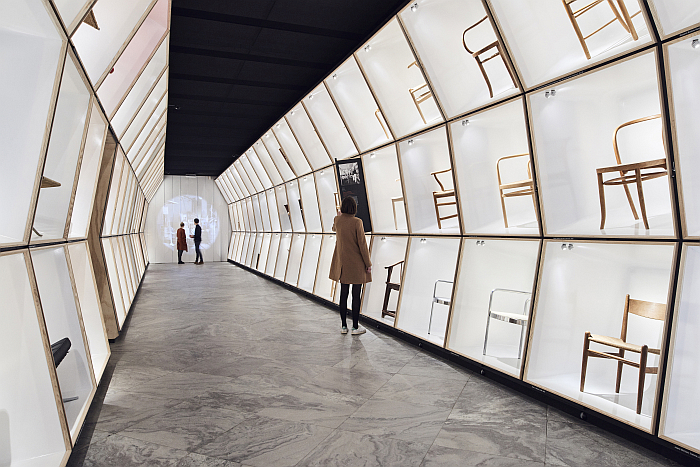
Without question one of the most important themes, if not the, most important theme, in contemporary architecture is the integration of new digital technologies, be that in context of the development and design of structures through for example A.I. or the physical building processes, including the use of 3D printing by way of achieving that industrialisation of construction that has long been approached but never reached. Integrations of digital technology that can be, and increasingly often are, associated with the use of, for example, more sustainable, regenerative, building materials, or of improving building life-cycles, or improving the internal ecology of buildings or the relationships of a building with the natural environment in which it stands.
Promising a presentation of research and projects realised in context of the Karlsruhe Institute of Technology's Professorship for Digital Design & Fabrication and the Kernen im Remstal based fibre composite construction company FibR GmbH, two organisations linked by the person of Professor Moritz Dörstelmann, which is an observation not a criticism, we have absolutely no idea what Digitales nachhaltiges Bauen will present, the Architekturschaufenster Karlsruhe preferring not to try to tempt visitors with the aid of information.
However, in many regards it doesn't matter what is presented, important is on the one hand that reflections on the integration of digital technology in future planing and construction and architecture are carried out in a public arena and not just amongst specialists in institutes and companies, and on the other that we all engage in and with such discourses, that we all take the opportunity offered by showcases such as Digitales nachhaltiges Bauen: for building and the built environment, architecture and urban planning, directly affect us all, individually and collectively, and are subjects on which we all should, must, have an opinion.
Not least because for all the unquestionable benefits novel materials and novel construction process, digitalisation, bring, there are also, invariably, less positive aspects, questions that must be posed and resolved. And that process requires us all.
Digitales nachhaltiges Bauen s scheduled to open at Architekturschaufenster, Waldstraße 8, 76133 Karlsruhe on Wednesday June 12th and run until Friday August 30th. Further details can be found at www.architekturschaufenster.de
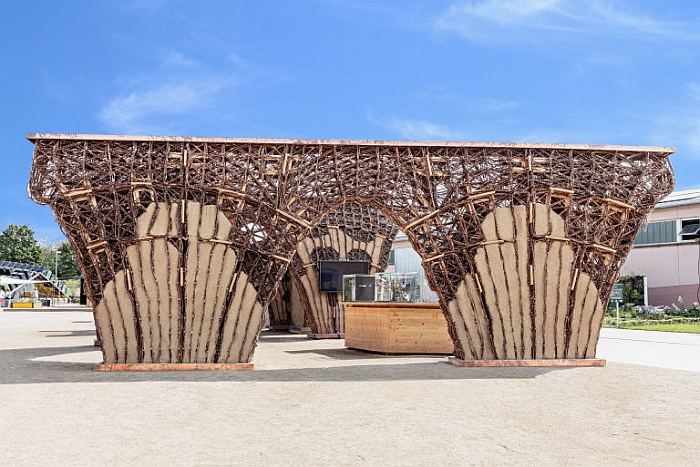
For all that the term 'Mid-century' popularly defines a period of increased commercialisation and consumerism in North American design (hi)story, it is also a term reflective of the manners in which many of the positions and ideals of 1920s and 30s Europe were expressed in North, South and Central America in the 1950s and 60s and 70s, and that invariably in context of the very different technological, political and economic situations of the time in the individual countries.
Including Cuba. A country whose late 20th century design (hi)story the Cranbrook Art Museum, that museum in that cradle of North American Mid-Century Modernism, aim to discuss in what they describe as the first comprehensive museal exhibition on the subject and in a presentation that will feature objects never previously exhibited outside Cuba.
A Cuba that following the revolution of the 1950s sought to, had to, establish, ensure, the production and supply of goods of daily use, sought to, had to, establish industries, process and systems to ensure the supply of objects of daily goods of all kinds; a post-Revolution Cuba Clara Porset returned to from her Mexican exile to contribute to helping establish not only such industries but industries producing contemporary goods meaningful for and responsive to prevailing realities, but a post-Revolution Cuba in which she failed to establish herself, or perhaps better put, a post-Revolution Cuba in which Clara Porset lost out in the internal political power struggles; others establishing themselves more successfully, being more successful in the internal political power struggles, including, for example, a Gonzalo Córdoba and a María Victoria Caignet who were so influential in the Cuban furniture industry in the 1960s and 70. And whose works were also marketed and sold in Europe; a rarely seen and even rarer discussed international context that should also be underscored by the number of non-Cuban designers active in and for the Cuba of the period. A 1960s and 70s Cuba that is not without wider relevance in context of the geopolitics of the period.
Promising a presentation of some 100 objects, more than half of which are furniture objects, A Modernist Regime should allow not only for insights into the essentially undiscussed (h)story of furniture design in post-Revolution Cuba, of the responses of furniture designers to not only the prevailing economic and social realities but also the need to establish a post-Revolution Cuban identity removed from but arising from the pre-revolution Cuba, nor only allow for differentiated insights on a land, on a (hi)story, all too often but superficially known and appreciated, but also allow for reflections and considerations on questions of design in political contexts: reflections and consideration on how much regime was in Cuban Modernism and how much Modernism was in the Cuban regime.
A Modernist Regime: Cuban Mid-Century Design is scheuled to open at Cranbrook Art Museum, 39221 Woodward Ave, Bloomfield Hills, MI 48303 on Saturday June 15th and run until Sunday September 22nd. Further details can be found at https://cranbrookartmuseum.org
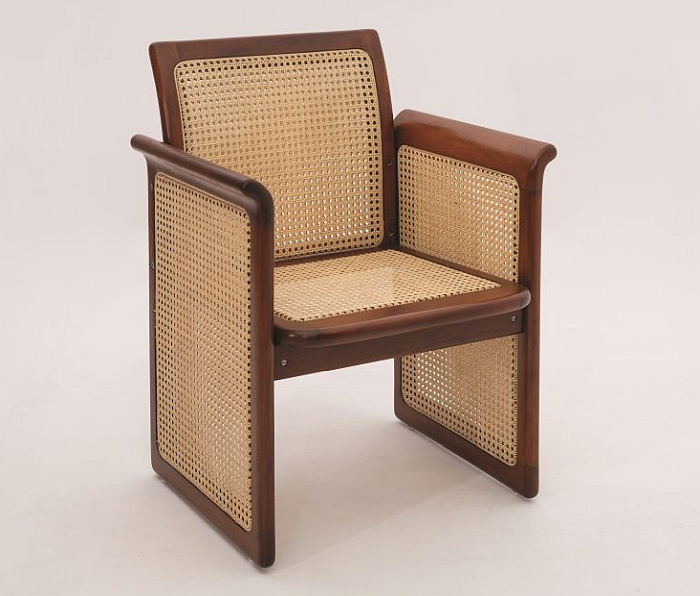
Born in 1941 Achillina Bo studied architecture in her native Rome before moving to Milan where, amongst other stations, she spent time in the office of Gio Ponti, including serving on the editorial team of the influential architecture and design magazine Domus, before in 1946, and following her marriage, the now, Lina Bo Bardi emigrated with her new husband Pietro Maria Bardi, to Brazil where the more interesting part of her career was played out.
A career, a contribution to the development of architecture in the second half of the 20th century, and an ongoing relevance and importance, the Museum für Architekturzeichnung, Berlin, aim to approach and explore in The Poetry of Concrete via a presentation of some 40 drawings by Bo Bardi associated with half a dozen of her cultural institute projects, a particularly important and instructive component of Bo Bardi's oeuvre; some 40 drawings presented together for the first time in Europe and which as such are an easy to accept invitation to study Bo Bardi's approach to and appreciations of buildings and spaces and also how she used drawings rather than blueprints to help her approach that which she sought, and that, one notes, before the ubiquitous story telling of today. Was a use of drawings for the architect not for the PR department. And some 40 drawings to supported in The Poetry of Concrete by contemporary photos of the 6 institutions by Veronika Kellndorfer; contemporary photos which, should, help transfer the projects into a today Lina Bo Bardi couldn't possibly have predicted, and which in doing so should allow for appreciations of how the projects, how Lina Bo Bardi's position, how Lina Bo Bardi's approach have transferred to today.
And thus a presentation that, again should, not only allow for an an interesting and instructive introduction to Lina Bo Bardi for those unfamiliar with her work and positions, but also allow those who are familiar with Bo Bardi to approach fresh reflections on her legacy and contemporary relevance. Fresh reflections on Lina Bo Bardi's poetry in a 21st century context.
Lina Bo Bardi – The Poetry of Concrete opened at the Museum für Architekturzeichnung, Christinenstraße 18a, 10119 Berlin on Saturday June 1st and is scheduled to run until Sunday September 22nd. Further details can be found at www.tchoban-foundation.de
